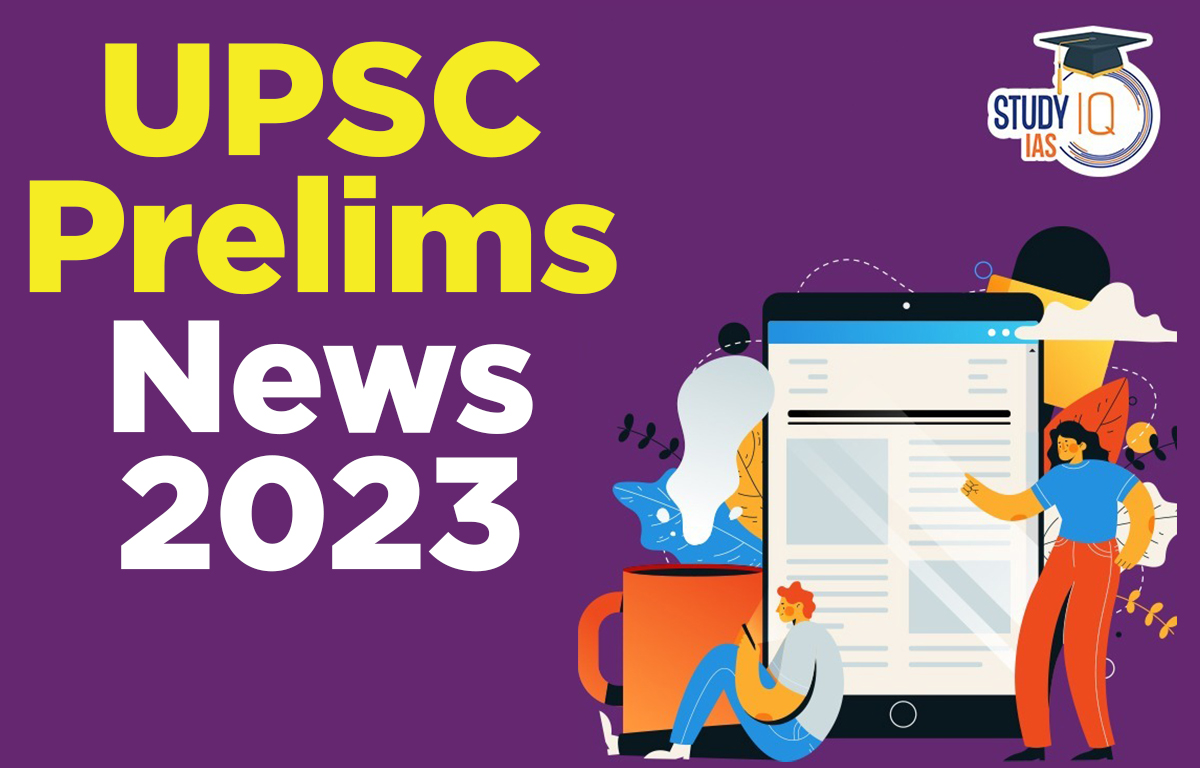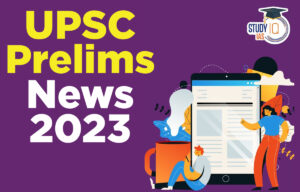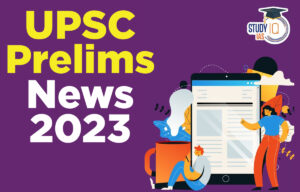UPSC Prelims News of 2 March 2023
Changthang Wildlife Sanctuary
Context: National Board for Wildlife (NBWL) has approved a proposal decision to transfer 3.16 hectares of land from the Changthang wildlife sanctuary in Ladakh to the IAF’s mountain radar
About Changthang Wildlife Sanctuary
- Location: Changthang sanctuary is located on the Tibetan Changthang plateau.
- It is famous for high altitude water lakes, Tsomoriri and Pangong Tso.
- Topography: The topography is formed of deep gorges and vast plateaus.
- There are around 11 lakes and 10 marshes in the Changthang Cold Desert Sanctuary, and the River Indus flows through the sanctuary, dividing it into two parts.
- Famous Fauna: It is famous for being the home of the snow leopard. The Tibetan wolf, wild yak, bharal, brown bear, mormot, Tibetan wild ass and dark-necked crane are also found in the sanctuary.
UPSC Prelims News 1 March 2023
Windsor Framework
Context: The United Kingdom (UK) and the European Union (EU) have announced ‘Windsor Framework’ to resolve the issue of imports and border checks in Northern Ireland, which will replace the Northern Ireland Protocol.
About the Northern Ireland Protocol
- After the UK left the European Union, Northern Ireland remained its only constituent that shared a land border with an EU-member, the Republic of Ireland.
- Since the EU and the UK have different product standards, border checks would be necessary before goods could move from Northern Ireland to Ireland.
- However, the two Irelands have had a long history of conflict, with a hard-fought peace secured only in 1998 under the Belfast Agreement, also called the Good Friday agreement.
- Fiddling with this border was thus considered too dangerous, and it was decided the checks would be conducted between Great Britain and Northern Ireland.
- This was called the Northern Ireland Protocol.
About the Windsor Framework
- The Windsor Framework Deal proposes two crucial aspects.
- The first aspect is the introduction of a green lane and red lane system for goods.
- The green lane system will be for goods that will stay in Northern Ireland.
- The red lane system will be for goods that will go to the EU.
- The second aspect is the ‘Stormont Brake’.
- It allows Northern Ireland lawmakers and London to veto any EU regulation. The veto is applicable if they believe that the regulation affects the region adversely.
Pilot on Coin Vending Machine: RBI
Context: RBI Governor has said that the central bank will start a pilot project to launch QR code based coin vending machines.
About the Project
- These vending machines will dispense coins against debit to the customer’s account.
- These vending machines will dispense coins using UPI instead of physical tendering of banknotes.
- This will enhance the ease of accessibility to coins.
- Proposed mechanism for coin dispensation would be a departure from the conventional machines which relied on banknotes for facilitating coin exchanges.
- Machine would eliminate the need for physical tendering of banknotes and their authentication.
NEOMIR Mission
Context: The European Space Agency (ESA) has planned NEOMIR mission for finding dangerous asteroids hidden by the Sun.
About The NEOMIR Mission
- Launch: ESA’s upcoming NEOMIR mission will be launched into orbit around the first Lagrange point (L1) between the Sun and Earth.
- This will give the telescope a view of asteroids that may come towards the Earth from the direction of the Sun.
- Detect Hidden Asteroids: The NEOMIR orbiting observatory will act as an early warning system to detect and monitor any asteroid coming towards Earth from the Sun’s direction.
- Asteroids are visible because they reflect the Sun’s light, which we can detect from Earth. However, the closer they get to the Sun, the harder they are to see.
- Lagrange point are places around a planet’s orbit where the gravitational pull of the planet and the Sun and the motion of the orbit combine to create an equilibrium , requiring very little energy to stay in orbit.
- Monitor Ring Around Sun: Being situated outside of Earth’s distorting atmosphere, NEOMIR will monitor a close ring around the Sun that is impossible to observe from the ground.
- Detect Heat: By making observations in the infrared part of the light spectrum, NEOMIR will detect the heat emitted by asteroids themselves, which isn’t drowned out by sunlight.
- This thermal emission is absorbed by Earth’s atmosphere, but from space, NEOMIR will be able to see closer to the Sun than we can currently from Earth.
- Provide Data: NEOMIR will provide the data for local authorities to keep communities informed of airbursts weeks ahead.
Right Against Self-Incrimination
Context: A CBI Court has refused to accept arguments of a jailed leader that he had a right against self-incrimination.
What is an Individual’s Right against Self-incrimination?
- Origin: The right against self-incrimination finds origin in Roman law, and evolved as a distinct right in the English jurisprudence.
- Indian Constitution: Under Article 20(3) in Part III (Fundamental Rights) of the Indian Constitution, “No person accused of any offence shall be compelled to be a witness against himself.”
- The right prevents police from coercing anyone to confess to a crime, and obtain a conviction based on that confession.
- Derived rights: The right to be presumed innocent until proven guilty and the right to remain silent in an interrogation have all been a result of right against self-incrimination.
Supreme Court Judgments in this Regard
- In State of Bombay versus Kathi Kalu Oghad, the Supreme Court ruled that obtaining photographs, fingerprints, signatures, and thumb impressions would not violate the right against self-incrimination of an accused.
- In Ritesh Sinha versus State of Uttar Pradesh, the SC broadened the parameters of handwriting samples to include voice samples, which would not violate the right against self-incrimination.
- In Selvi v State of Karnataka, the SC held that a narcoanalysis test without the consent of the accused would be a violation of the right against self-incrimination.
- Obtaining a DNA sample is permitted. If they refuse to give a sample, the court can draw adverse inferences against them under Section 114 of the Evidence Act.
Quantum Tunneling
Context: Molecules Caught Tunnelling for the First Time.
About Quantum Tunneling:
- Quantum tunneling is defined as a quantum mechanical process where wavefunctions can penetrate through a potential barrier.
- The transmission through the potential barrier can be finite and relies exponentially on the barrier width and barrier height.
- Quantum tunneling cannot be explained through the laws of classical mechanics, where a dense potential barrier needs potential energy.
- It has a crucial role in physical processes such as nuclear fusion.
- Tunneling can be understood through the concepts of Heisenberg’s uncertainty principle.
- It’s been used in quantum computing, tunnel diodes and scanning tunnelling microscopes.
- The tunnel effect is also used to explain the alpha decay of atomic nuclei. By including the tunnel effect, some astrochemical syntheses of molecules in interstellar dark cloud.
- Quantum tunneling is forecasted to create physical limits to the dimensions of the transistors employed in microelectronics.
Quantum Mechanics
- Quantum mechanics allows particles due to their quantum mechanical wave properties to break through the energetic barrier (wall) and a reaction occurs.
Neuromorphic Computing
Context: The global neuromorphic computing Market size is expected to reach USD 20,272.1 million by 2030.
About Neuromorphic Computing:
- It is inspired by the human brain and the functioning of the nervous system; Neuromorphic Computing was a concept introduced in the 1980s.
- Neuromorphic Computing refers to the designing of computers that are based on the systems found in the human brain and the nervous system.
- Neuromorphic computing devices can work as efficiently as the human brain without acquiring large room for the placement of software.
- One of the technological advancements that has rekindled the interest of scientists in neuromorphic computing is the development of the Artificial Neural Network model (ANN).
- It aims to improve energy efficiency, computation speed, and learning efficiency in various applications such as voice, vision, gesture recognition, robotics, and search retrieval.
- Neuromorphic computing provides benefits such as fast parallel processing with minimum power requirement.
- It also eliminates the need for back-and-forth data movement between components in the von Neumann architecture; this is expected to drive its adoption for image and signal processing applications.
- Moreover, its expected adoption in consumer electronics, automotive, healthcare, and military & defense sectors will also be largely responsible for driving the market growth.
Organ on a Chip
Context: The FDA Modernization Act 2.0, recently signed by U.S. President, allows clinical trial leaders to use animal trial alternatives instead of traditional animal modelling for drug and biological development.
About organ on a chip system:
- Organ-on-a-Chips refers to a micro-engineered biomimetic system that reflects the structural and functional characteristics of human tissue.
- It is also known as micro physiological systems or “tissue chips”.
- It is small devices containing human cells that are used to mimic the environment in human organs, including blood flow and breathing movements, serving as synthetic environments in which to test new drugs.
- It involves biomaterial technology, cell biology, and engineering combined together in a miniaturized platform.
- Donald Ingber, a professor of bioengineering and director of the Wyss Institute at Harvard University along with his colleagues developed the first human organ-on-a-chip model in 2010.
- This first organ-on-a-chip model was a “lung on a chip” that resembled the biochemical aspects of the lung and its breathing mechanism.
Applications
- Uses especially in precision medicine, drug development, and screening.
- It can accurately be used in drug discovery for personalized medicine.
DNA Vaccine against Dengue
Context: India’s first and only DNA vaccine candidate for dengue has shown promising results.
About DNA Vaccine against Dengue
- Dengue is a viral infection transmitted to humans through the bite of infected Aedes aegypti mosquitoes.
- Need: India needs the dengue vaccine because it is a major public health burden in India, ranking fourth among the worst-affected nations.
- Development: The present DNA vaccine candidate has been in development since 2019 by scientists from the National Centre for Biological Sciences (NCBS), Bengaluru, in collaboration with nine institutions in India, Africa and the US.
- Result: In preliminary trials on mice, the candidate generated a robust immune response and improved survival rates after exposure to the disease.
- Challenges: Developing an effective vaccine against dengue is tricky because it is caused by four closely related viruses, and an ideal vaccine must target all serotypes.


 UPSC Prelims News 20 March 2023
UPSC Prelims News 20 March 2023
 UPSC Prelims News 17 March 2023
UPSC Prelims News 17 March 2023





















